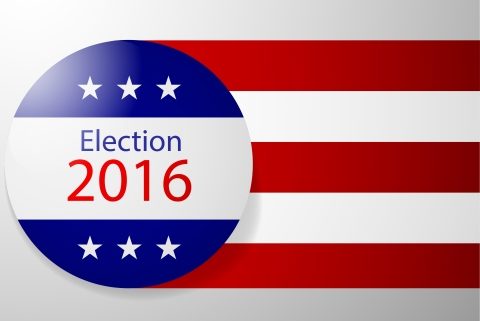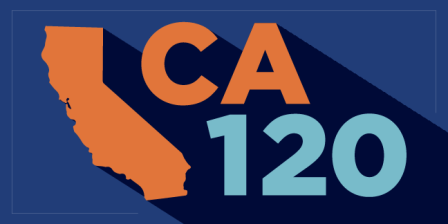News
CA120: On the trail of the provisionals
 (Vector illustration: NoDenmand, via Shutterstock)
(Vector illustration: NoDenmand, via Shutterstock)California’s primary election was filled with administrative glitches. And some of those problems actually may have disenfranchised voters who hoped to vote in a very dramatic presidential primary.
Ironically, one of the largest post-election dramas surrounding the June vote in California was how these problems were being resolved.
And that brings us to the use of provisional ballots, the subject of the latest CA120 poll.
Provisional ballots are given to voters in case problems arise with the regular ballots – such as being sent to the wrong address or inadvertently given to a voter who has already received a ballot, or any number of other issues. They are intended to make sure that any voter who wants to properly cast a ballot is able to do so.
Provisional ballots in California are generally praised by voting-rights advocates as a key safety-valve for an election.
Rather than being turned away, as they might be in other states, California voters who have lost their mail-in ballots, or who have shown up to the wrong precinct, or who cannot be found on the voting rolls, are allowed to complete a ballot under the supervision of election officials. Those officials later review each ballot before validating and counting them.
In practice, about 85% of these provisional ballots are determined to be good and are included in the vote totals. Those that aren’t counted are often from voters who thought they were registered, but, in fact, weren’t.
But before the voting had even taken place, there were conspiracy theories aplenty, many from the supporters of Bernie Sanders.
Some were claiming that provisional ballots would not be counted. Shailene Woodley, a top Sanders backer and Hollywood celebrity, tweeted on Election Day, “If u or anyone else has problems at the polls, remember to call the Bernie voter hotline. Do NOT fill out a provisional ballot.”
After the election, more than two million ballots were still outstanding.
Numerous Reddit posts analyzing election returns claimed that the spike in provisional ballots — upwards of 700,000 based on the daily reports from the secretary of state, but more than 750,000 according to a Los Angeles Times tally — was a sign of voter fraud.
The total number of provisional ballots cast is not known. Counties are not required to report them in primary elections. Election officials believe the highest number of provisional ballots used in California was in the 2012 general election. But in terms of the percentage of poll voters casting provisional ballots, the 2016 June primary election is likely the record holder.
A review of 33 counties** that reported provisional voting status on their publicly available files* shows that more than 12% of poll voters used a provisional ballot.
This number is higher among non-partisans, younger voters, Latinos and Asians, but predominantly, these provisional ballots are being used as a backup voting method for by-mail voters, the so-called “absentee voters” who showed up at their local polling location on Election Day rather than mail in their ballot.
| CA PROVISIONAL VOTING USAGE BY DEMOGRAPHIC | |
| TOTAL | 12% |
| Democrat | 12% |
| Republican | 9% |
| Non Partisan / Other | 15% |
| Age 18-24 | 23% |
| Age 25-34 | 18% |
| age 35-50 | 13% |
| age 50-64 | 8% |
| 65+ | 7% |
| Apartment /Renter | 15% |
| Homeowner | 9% |
| Latino | 18% |
| Asian | 11% |
| New Registrants (Since Jan 1, 2016) | 25% |
| Traditional Poll Voters | 4% |
| By-Mail Voters | 45% |
*Calculated as number of provisional votes cast by poll voters.
Of all voters, a whopping 45% who received their ballots in the mail, but who actually voted at the polls, ended up having to vote with a provisional ballot. And, combining demographics, about half of Latino by-mail voters who cast ballots at the polls did so with a provisional ballot.
Reviewing the data through another lens, by-mail voters were only 19% of the voters who cast their ballots at the polls — but they accounted for 72% of voters that used provisional ballots.
Again, examining the provisional vote, Latinos constituted only about 20 percent of the poll vote but were 32% of provisional voters, and new registrants were only 21% of poll voters, but they accounted for 44% of those who needed to use a provisional.
In order to investigate this phenomenon further, CA120 conducted a poll of more 700 provisional voters from these counties.
The findings show that voters who cast provisional ballots had significant doubts about the process and whether vote was going to be properly counted. At the same time, they did not believe that provisional voting was a failure in the system, and largely blamed themselves, not lawmakers or local elections officials, for the fact that they were voting through this alternative method.
The full survey can be seen here, and the cross-tabs are available here.
Respondents to the survey were allowed to select multiple reasons for why they needed to use a provisional ballot, and four of the top five reasons had to do with by-mail voting.
The top response was that the voter did not receive the ballot in the mail, but also that ballots were lost, left at home, or that voters were told they were a by-mail voter, but they didn’t know that.
Every voter who obtained the CA120 survey had cast a provisional ballot that was counted in the June Primary, yet only 35% were confident that their ballot would be counted. The rest presumed that their vote wouldn’t count, or that they were unsure. Potentially adding to this concern was the fact that two-thirds of voters who cast these ballots did not know that they could actually check online to see if their vote had been validated.
Only 8% of voters actually knew that their ballot could be checked and successfully did so.
When presented with statements for and against provisional ballots, these voters expressed some confidence in the system. More than 70% agreed that “provisional ballots were a way to make sure all legitimate votes can be cast and counted…” and only 40% of voters agreed that “provisional voting is a sign of a broken system…”
When asked who was to blame for their need to complete a provisional ballot, nearly half blamed themselves, with the remainder being split between blaming the state officials (30%) and local registrars (22%).
As we head into the Nov. 8 general election, provisional voting will likely reach an all-time high again. This is particularly true if more less-frequent and newly registered voters are opting to vote by mail.
And, one wonders what the impact will be as the state heads into a predominantly by-mail system, relying on more voting centers and fewer actual polling locations.
At the same time, new same-day registration which should be up and running by 2018, and the ability to obtain ballots on demand with the passage of new voting legislation, could eliminate much of the need for provisional ballots and bring greater confidence to the election system.
—
**The 33 counties reporting Provisional Ballots were: Amador, Butte, Calaveras, Colusa, Contra Costa, Fresno, Humboldt, Kern, Lassen, Madera, Marin, Mariposa, Merced, Mono, Napa, Orange, Placer, Riverside, Sacramento, San Benito, San Francisco, San Joaquin, San Mateo, Santa Barbara, Santa Clara, Santa Cruz, Shasta, Sonoma, Sutter, Tehama, Tulare, Ventura and Yuba.
—
Ed’s Note: Paul Mitchell, a regular contributor to Capitol Weekly and the creator of the CA120 column, is vice president of Political Data Inc., and owner of Redistricting Partners, a political strategy and research company.
Want to see more stories like this? Sign up for The Roundup, the free daily newsletter about California politics from the editors of Capitol Weekly. Stay up to date on the news you need to know.
Sign up below, then look for a confirmation email in your inbox.

Leave a Reply